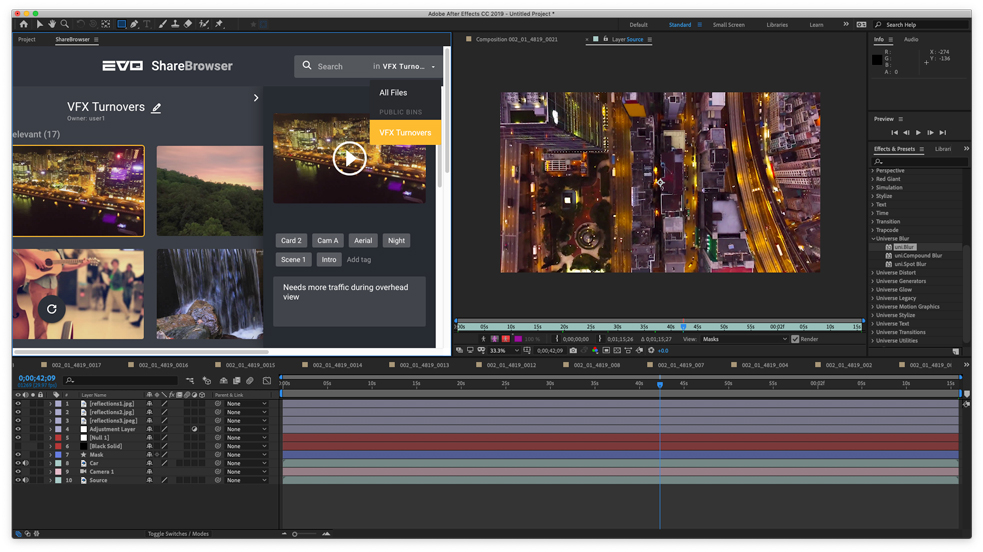Cover image via
Project panel (upper left corner below the Tools panel) is the area where you import, search, and organize assets in your After Effects projects. In the bottom of the panel you can create new folders and compositions as well as change item and project settings. Download free ringtones & wallpapers for your phone.
After Effects and Premiere Pro are two of Adobe’s flagship post-production apps. But which one do you need for which task? Let’s find out.
When you’re creating a new project, knowing when to use Premiere and when to use After Effects can make or break your project. They are both extremely powerful programs, that can sometimes perform the same functions, but most of the time, one of them is better at something than the other.
- Adobe After Effects serves a different role depending on the users needs. For example, an indie VFX artist might only use After Effects for compositing 3D rendered footage. A video editor might use After Effects more for title design, and an animator might use it for creating 2D cartoon characters.
- Create compositions in After Effects and use Dynamic Link to eliminate intermediate rendering in Adobe Premiere Pro. Import from Photoshop, Illustrator, and more. Collaborate with others and integrate with 300+ software and hardware partners. Learn about Team Projects Learn more about Adobe video and audio partners.
Now the differences between these two programs are pretty apparent to anyone who has used them before. But, if you’re new to the suite, it can be confusing determining which one you need to learn for a given post-production task.
Let’s take a look at Adobe’s two main video production software tools and see what they do — and when to use one over the other.
Adobe Premiere Pro


Adobe Premiere Pro is an NLE (nonlinear editor) with the main function of editing video clips together in a sequence. This is the program that most beginners open to create a simple video with multiple clips and music. It’s incredibly scalable — easy to use for beginners, and still powerful enough for a master editor. It’s got just about everything you need to complete a professional video: a clip editor, color correction tools, audio programs, and even graphics software.
GIPHY CAPTURE is the best way to create GIFs on your Mac. Simple, powerful, free, and easy enough for pretty much everyone and even a few small mammals. Giphy capture. Find GIFs with the latest and newest hashtags! Search, discover and share your favorite Capture GIFs. The best GIFs are on GIPHY.
Tasks for Premiere:
- Editing a video with existing clips imported from a camera.
- Editing audio within your video — Premiere’s audio functions far surpass AE’s.
- Placing transitions between clips within your timeline.
- Creating/polishing any type of video — short films, music videos, social videos, etc.
Adobe After Effects
Adobe After Effects is a digital motion graphics platform used to create either simple animations or intricate graphics sequences. If you ever hear of a “motion graphics expert,” chances are they’re proficient in After Effects. The program adds motion to layers and assets that you couldn’t do in Premiere. Its motion tools are much better than Premiere’s, and it’s the preferred tool for adding motion to videos, images, and designs. It’s a “hard to learn, easy to master” type of program, but once you get the hang of it, it’s essential for creating motion graphics or visual effects for your projects.
Tasks for After Effects:

- Creating motion graphics packages for your projects.
- Adding motion blur and movement to assets and layers.
- Manipulating multilayer sequences that require detailed keyframing.
- Creating title sequences that include keyframe-based animations.
After Effects Vs. Premiere Pro: What’s the Difference?
To sum it all up, Premiere assembles all of your assets and creates a final video product, while After Effects is mainly an asset-generation tool. People complete projects in After Effects all the time, though — it’s great for creating motion-based social video with only a song bed underneath, or even creating a full animation.
So really, there’s no true “vs.” in this argument. It’s kind of like debating PowerPoint and Word — you use them for different tasks, even though they share some similar functions. They are extremely well linked, though — and like many editors, I use them concurrently all of the time. Once you get familiar with both programs, you’ll learn how to dynamically link After Effects compositions to your Premiere projects so you can access both assets at the same time. (For more information about dynamic linking, check out the video by Justin Odisho above.)
Looking for more on Premiere and After Effects? Check these out.


Cover image via
After Effects and Premiere Pro are two of Adobe’s flagship post-production apps. But which one do you need for which task? Let’s find out.
When you’re creating a new project, knowing when to use Premiere and when to use After Effects can make or break your project. They are both extremely powerful programs, that can sometimes perform the same functions, but most of the time, one of them is better at something than the other.
Now the differences between these two programs are pretty apparent to anyone who has used them before. But, if you’re new to the suite, it can be confusing determining which one you need to learn for a given post-production task.
Let’s take a look at Adobe’s two main video production software tools and see what they do — and when to use one over the other.
Adobe Premiere Pro
Adobe Premiere Pro is an NLE (nonlinear editor) with the main function of editing video clips together in a sequence. This is the program that most beginners open to create a simple video with multiple clips and music. It’s incredibly scalable — easy to use for beginners, and still powerful enough for a master editor. It’s got just about everything you need to complete a professional video: a clip editor, color correction tools, audio programs, and even graphics software. Agenda.
How To Get After Effects For Free
Tasks for Premiere:
- Editing a video with existing clips imported from a camera.
- Editing audio within your video — Premiere’s audio functions far surpass AE’s.
- Placing transitions between clips within your timeline.
- Creating/polishing any type of video — short films, music videos, social videos, etc.
Adobe After Effects
Adobe After Effects is a digital motion graphics platform used to create either simple animations or intricate graphics sequences. If you ever hear of a “motion graphics expert,” chances are they’re proficient in After Effects. The program adds motion to layers and assets that you couldn’t do in Premiere. Its motion tools are much better than Premiere’s, and it’s the preferred tool for adding motion to videos, images, and designs. It’s a “hard to learn, easy to master” type of program, but once you get the hang of it, it’s essential for creating motion graphics or visual effects for your projects.
Tasks for After Effects:
- Creating motion graphics packages for your projects.
- Adding motion blur and movement to assets and layers.
- Manipulating multilayer sequences that require detailed keyframing.
- Creating title sequences that include keyframe-based animations.
After Effects Vs. Premiere Pro: What’s the Difference?
To sum it all up, Premiere assembles all of your assets and creates a final video product, while After Effects is mainly an asset-generation tool. People complete projects in After Effects all the time, though — it’s great for creating motion-based social video with only a song bed underneath, or even creating a full animation.
After Effects Expressions Pdf
So really, there’s no true “vs.” in this argument. It’s kind of like debating PowerPoint and Word — you use them for different tasks, even though they share some similar functions. They are extremely well linked, though — and like many editors, I use them concurrently all of the time. Once you get familiar with both programs, you’ll learn how to dynamically link After Effects compositions to your Premiere projects so you can access both assets at the same time. (For more information about dynamic linking, check out the video by Justin Odisho above.)
After Effects Online Editor
Looking for more on Premiere and After Effects? Check these out.
